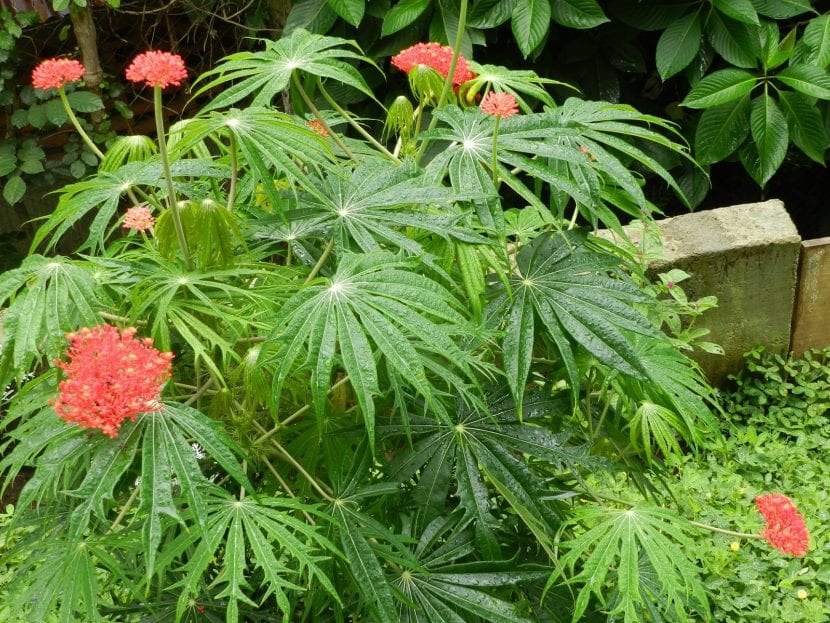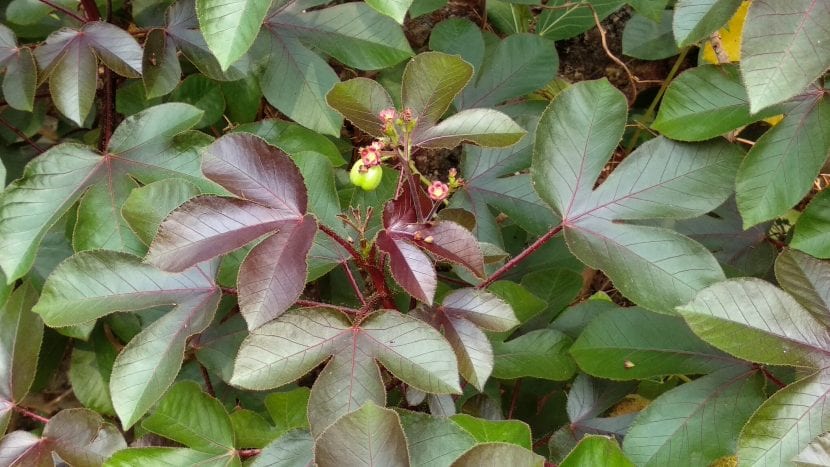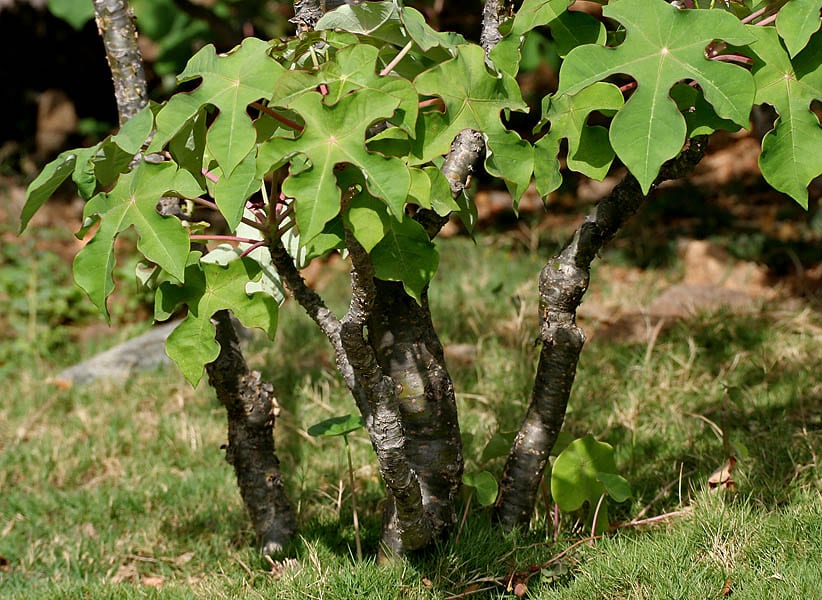
Jatropha multifida
Image - Wikimedia / SergioTorresC
In the genre of jatropha Some 175 species of trees, shrubs and succulents are included that are characterized by having leaves and flowers of enormous ornamental value. In fact, it is not uncommon to find a specimen in the gardens and collections.
But its maintenance is not very simple when the weather is not good; And it is that unfortunately, being native to tropical regions, they fear frost. However, can be grown indoors.
Origin and characteristics

Jatropha gossypiifolia
Image - Wikimedia / Vijayanrajapuram
Our protagonists are native plants of Africa, North America and the Caribbean, where they grow in tropical regions without frost. They can be trees, shrubs or herbs, sometimes succulent, with stems that contain latex. The leaves are alternate or subposed, lobed to palmately lobed.
The flowers are grouped in axillary or terminal inflorescences, and there may be only female or male, or of both genders in which case they would be monoecious. The fruit is capsule-shaped and contains carunculated seeds inside.
All parts are poisonous, although there are some species that are used medicinally.
Main species
- Jatropha curcas: known as pilón de tempate, it is a shrub up to 5 meters high, monoecious, native to Central America.
It is widely cultivated for the medicinal properties of leaves and seeds, which are: healing, disinfectant and purgative. But the fruits or seeds cannot be ingested directly, but must be used either as a poultice or by chewing three seeds with half a liter of water for a little while and then swallowing. - Jatropha: known as peregrina, it is a 2-3 meter tall shrub with succulent stems native to Central America.
- Jatropha multifida: it is a shrub or small tree up to 6 meters high native to the south of North America, Mexico and Cuba.
Like J. curcas, the fresh seeds can be used as a healing and purgative, but with care. - Jatropha gout: known as king's cape or spurge, it is a plant native to Central America that grows to a height of 1-2 meters. See file.
What are their cares?

Jatropha gout
Image - Wikimedia / JMGarg
If you want to have a jatropha specimen, we recommend you take care of it as follows:
- Location:
- Exterior: it must be outside, in full sun.
- Indoor: put it in a bright room, without drafts.
- Irrigation: rather scarce. About 2 times a week in summer and every 10 days the rest.
- Earth:
- Garden: it must have very good drainage, as it fears waterlogging.
- Pot: it is advisable to plant it simply on the cheekbone, to help it root.
- Subscriber: it can be paid by adding a little bit of sheep manure for example if it is in soil, or with liquid guano if it is in a pot.
- Multiplication: by seeds in spring.
- Rusticity: it does not support cold or frost.
What do you think of these plants?